Tornado SB1
An
extreme transformation based on the Ferrari 550 Maranello, the
Tornado surprised many at the 2004 Geneva Motor Show. Its
highly personal styling earned it the wrath of Ferrari
enthusiasts, who claimed it was sacrilege to have touched a
Ferrari. Let's take a step back and take a closer look at this
Tornado.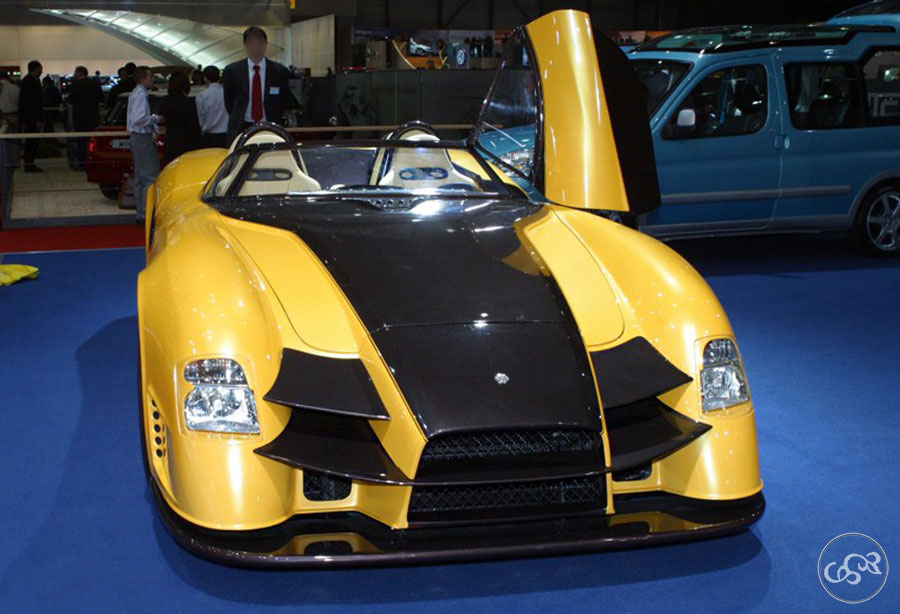 It's hard to tell a Ferrari 550 Maranello from this composite
body (Velocity Journal photo)
It's hard to tell a Ferrari 550 Maranello from this composite
body (Velocity Journal photo)
The Sbarro method
It's important to remember
that every Sbarro built was commissioned by a customer.
Franco Sbarro receives his future buyer, who often remains
anonymous, listens to his requests and quickly tells him
whether or not he agrees to build the car he wants. If so, a
deposit is paid and work begins. Sbarro cars are always
tailored to the customer's tastes, and may not appeal to the
general public.
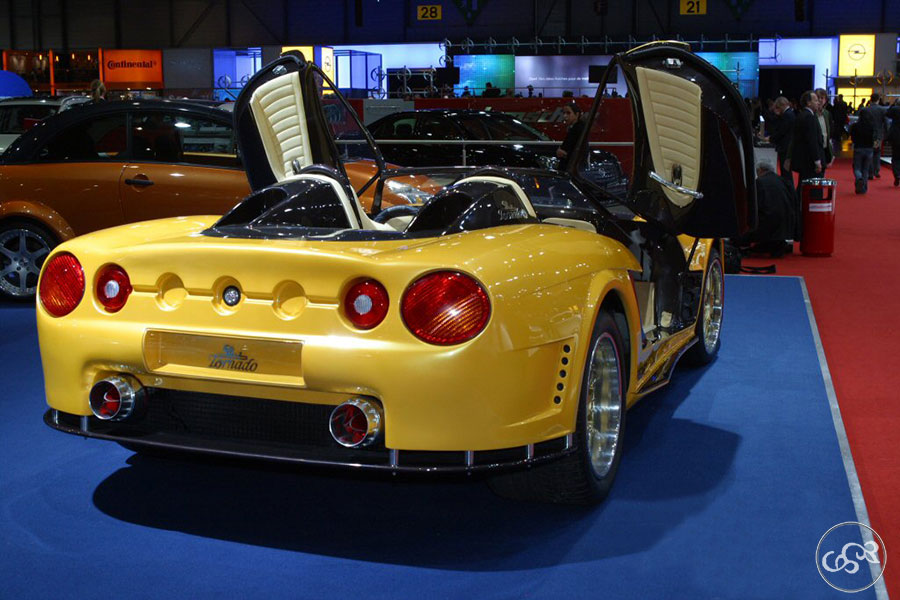
Second 550 Maranello
The Ferrari 550 Maranello
had already been transformed by Franco Sbarro into an
enlarged version produced in two examples. This wide 550 was
a great success, retaining the general lines of the
production car.
Here, however, there's a change of direction: the car becomes unrecognizable. First, the Maranello becomes a roadster. The body is made of composite materials from Saint Gobain Vetrotex, Sbarro's usual partner. Its yellow and black color does not go unnoticed.
The rear is characterized by a succession of round elements, including the four lights, the logo and the large chromed tailpipes. A red line used to link the taillights to the Tornado's workshop exit: this has since disappeared. The front end is more striking. Its tortured styling is reminiscent of the Testarossa of the '60s, with its protruding snout and fenders. Two of the four black panels on either side of the grille were later painted yellow, lightening the front end a little. The panoramic windscreen adds a retro touch. The doors open like elytra, which is always spectacular.
Here, however, there's a change of direction: the car becomes unrecognizable. First, the Maranello becomes a roadster. The body is made of composite materials from Saint Gobain Vetrotex, Sbarro's usual partner. Its yellow and black color does not go unnoticed.
The rear is characterized by a succession of round elements, including the four lights, the logo and the large chromed tailpipes. A red line used to link the taillights to the Tornado's workshop exit: this has since disappeared. The front end is more striking. Its tortured styling is reminiscent of the Testarossa of the '60s, with its protruding snout and fenders. Two of the four black panels on either side of the grille were later painted yellow, lightening the front end a little. The panoramic windscreen adds a retro touch. The doors open like elytra, which is always spectacular.
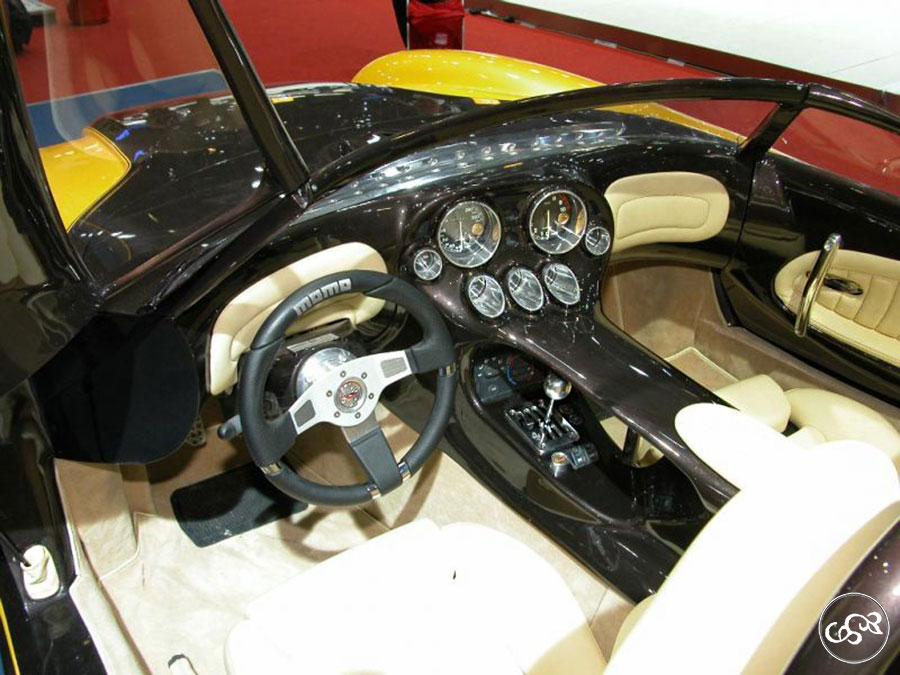
The elegance of the
luxurious interior, with white leather and panels in the
same black as the exterior, contrasts with the style of the
bodywork. The meters are no longer behind the steering
wheel, but on the center console. The gearshift lever is
under a central shelf and must not be very easy to operate.
There are no interior or exterior mirrors.
As you'll have gathered, the Tornado was not unanimously acclaimed. In 2005, it served as the model for a second Tornado, the SB2, this time based on the Ferrari 456.
As you'll have gathered, the Tornado was not unanimously acclaimed. In 2005, it served as the model for a second Tornado, the SB2, this time based on the Ferrari 456.
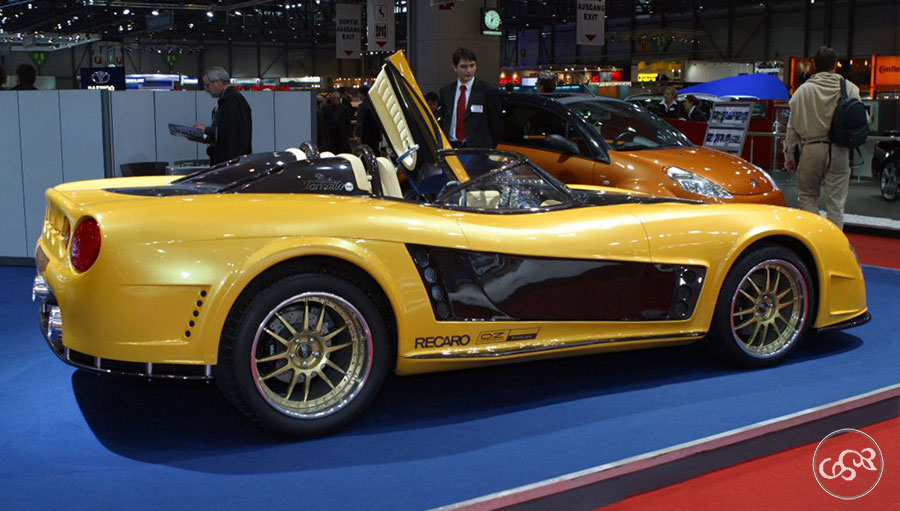
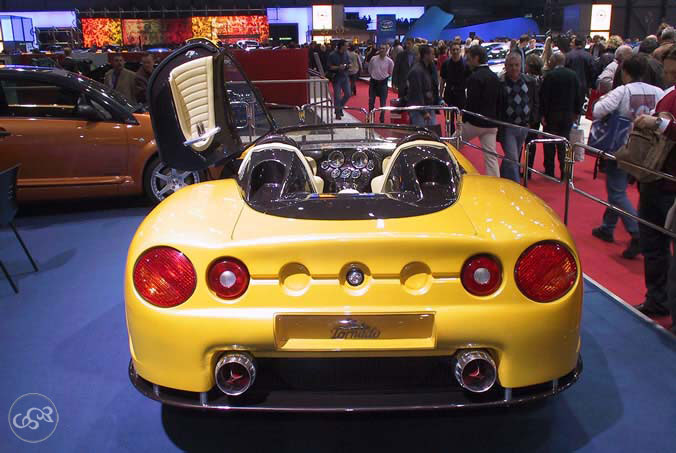
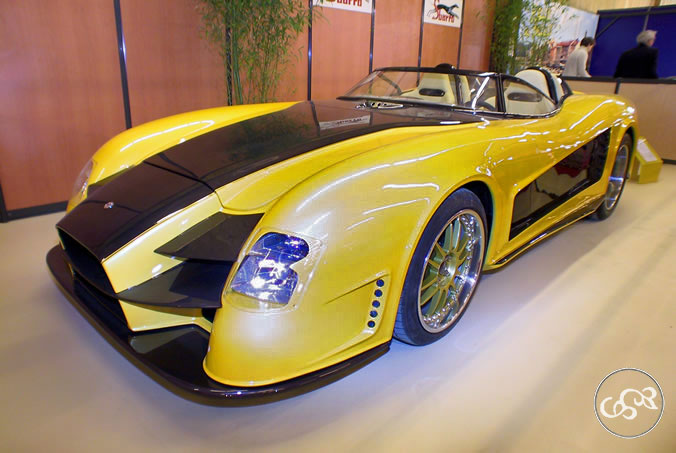
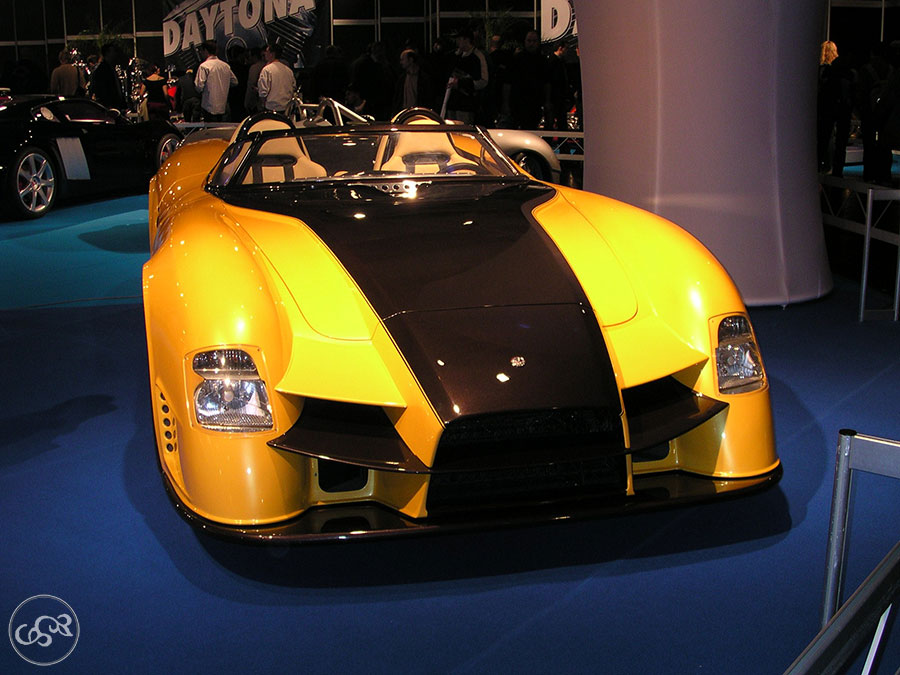
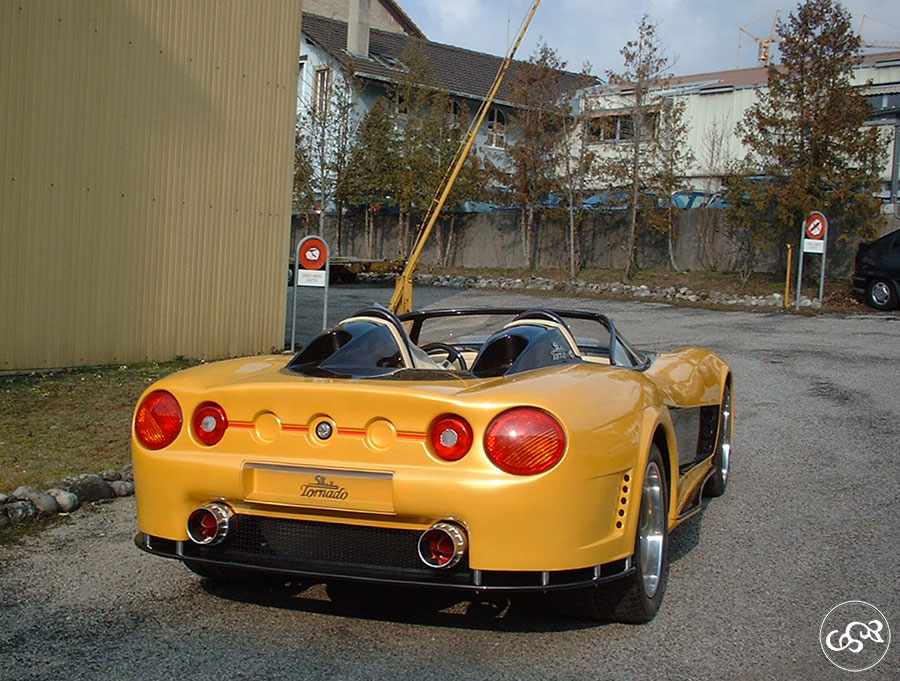
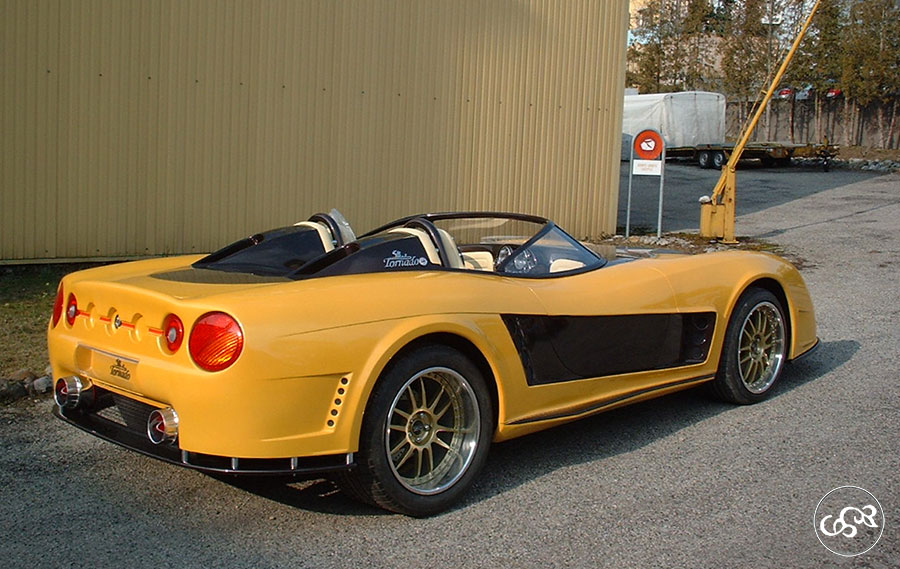
In brief
1- Roadster based on Ferrari 550 Maranello
2- Very personal lines
3- Served as the basis for the Tornado SB2